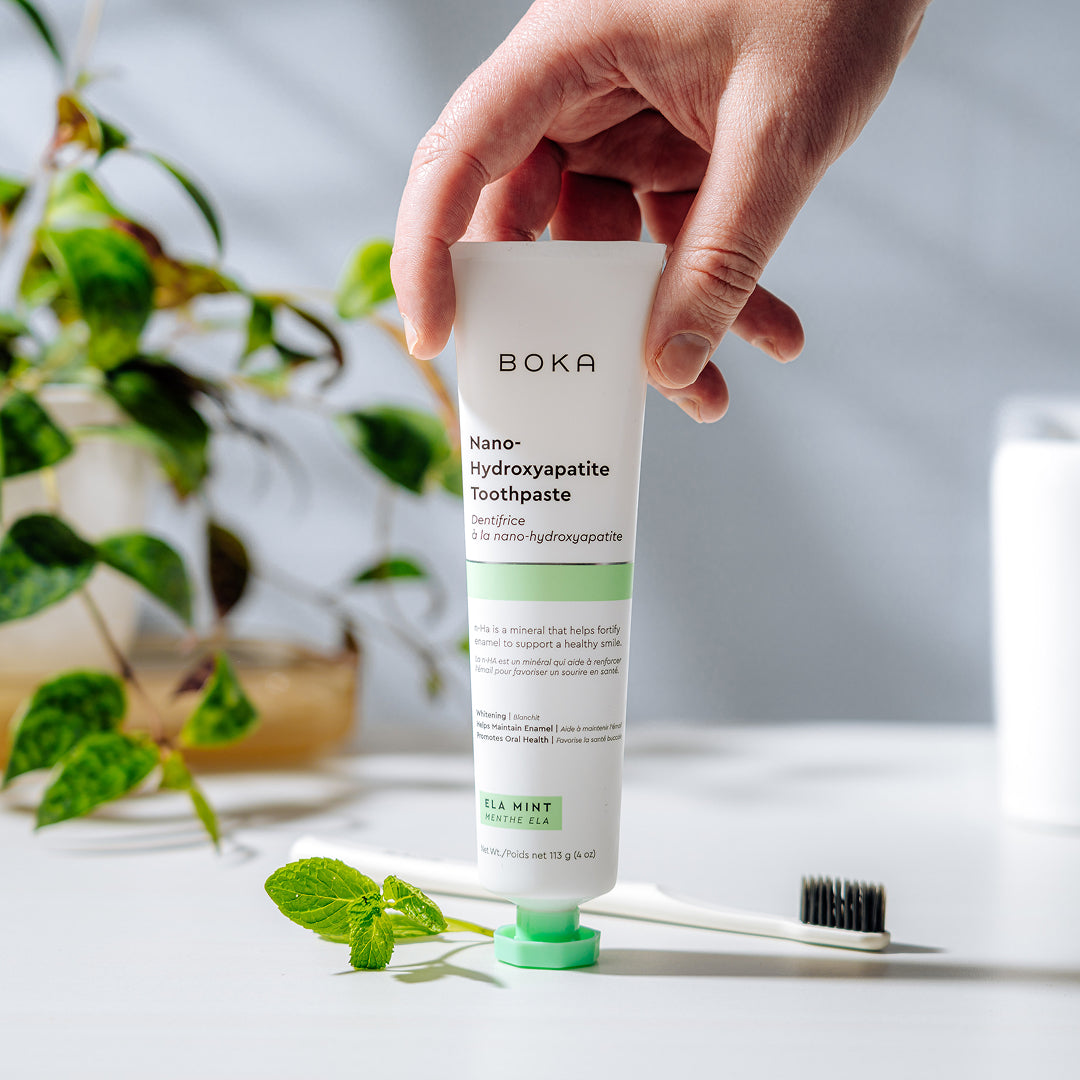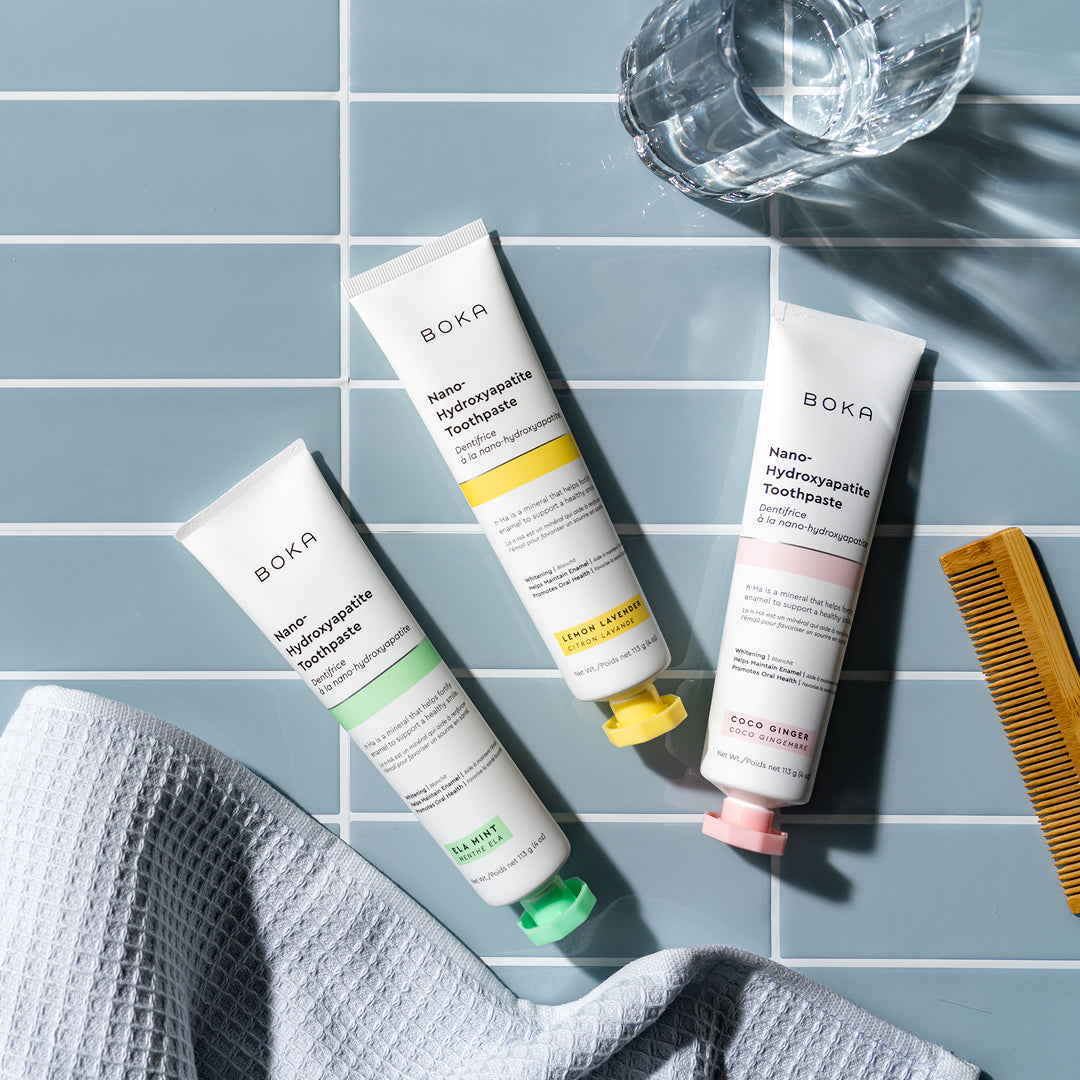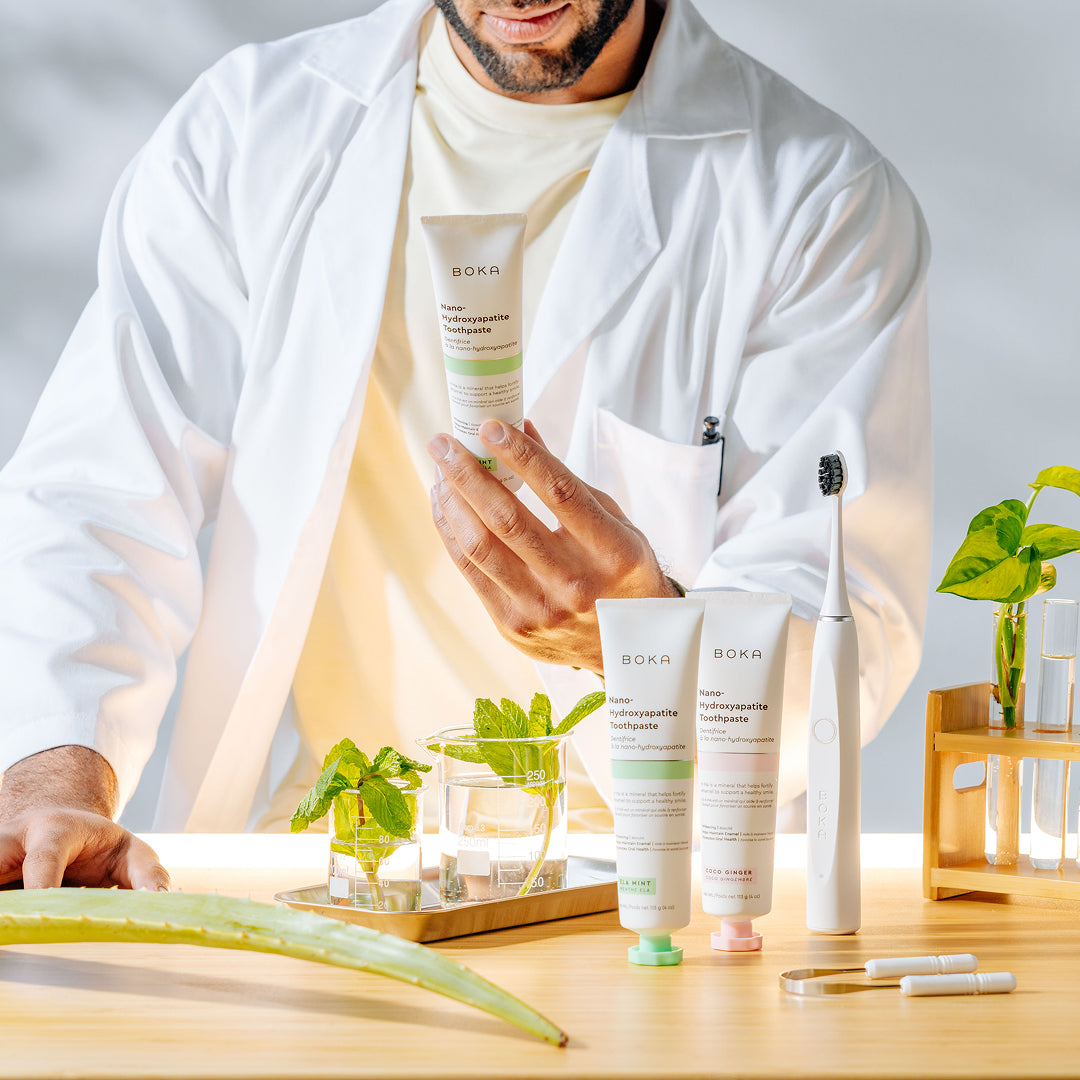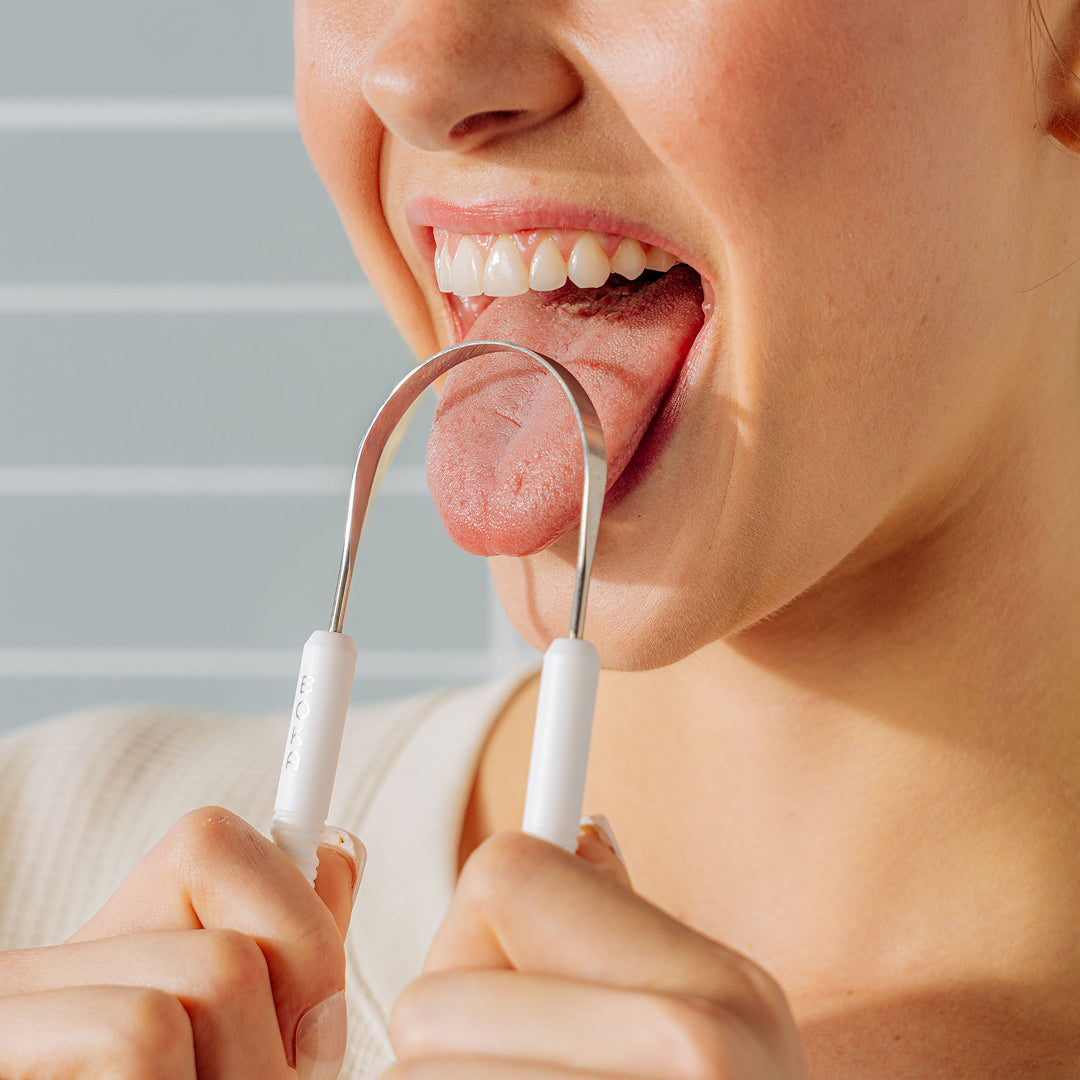-
Ela Mint n-Ha Toothpaste
Regular price $13.00Unit price perRegular price
$13.00Sale price
$13.00
-
n-Ha Toothpaste 3-Pack
Regular price $36.00Unit price perRegular price
$39.00Sale price
$36.00
Sale -
Nano (n-Ha) Toothpaste Whitening* 3 Pack
Regular price $37.00Unit price perRegular price
$40.00Sale price
$37.00
Sale -
Refresh Mint Whitening* n-Ha Toothpaste
Regular price $11.75Unit price perRegular price
$15.99Sale price
$11.75
Sale -
Cucumber Mint n-Ha Toothpaste
Regular price $13.00Unit price perRegular price
Sale price
$13.00
-

 SUBSCRIBE & DONATE
SUBSCRIBE & DONATEn-Ha Toothpaste Family 3 Pack
Regular price $36.00Unit price perRegular price
$39.00Sale price
$36.00
Sale -

 SUBSCRIBE & DONATE
SUBSCRIBE & DONATEOrange Cream n-Ha Toothpaste
Regular price $13.00Unit price perRegular price
$13.00Sale price
$13.00
-
Lemon Lavender n-Ha Toothpaste
Regular price $13.00Unit price perRegular price
$13.00Sale price
$13.00
-
Charcoal Yuzu Mint n-Ha Toothpaste 3-pack
Regular price $36.00Unit price perRegular price
$39.00Sale price
$36.00
Sale -
Charcoal Yuzu Mint n-Ha Toothpaste
Regular price $13.00Unit price perRegular price
$13.00Sale price
$13.00
-
n-Ha Toothpaste 2-Pack
Regular price $24.00Unit price perRegular price
$26.00Sale price
$24.00
Sale -

 SUBSCRIBE & DONATE
SUBSCRIBE & DONATEWatermelon Mint n-Ha Toothpaste
Regular price $13.00Unit price perRegular price
$13.00Sale price
$13.00
-
Coco Ginger n-Ha Toothpaste
Regular price $13.00Unit price perRegular price
$13.00Sale price
$13.00
-

 SUBSCRIBE & DONATE
SUBSCRIBE & DONATEStrawberry Mango n-Ha Toothpaste
Regular price $13.00Unit price perRegular price
$13.00Sale price
$13.00
-
Mighty Duo
Regular price $30.00Unit price perRegular price
$33.00Sale price
$30.00
Sale -
Boka x Grillo's Pickles Cucumber Dill n-Ha Toothpaste
Regular price $13.00Unit price perRegular price
$13.00Sale price
$13.00
Sold out -
Essentials Duo
Regular price $17.00Unit price perRegular price
$19.00Sale price
$17.00
Sale -
Home & Away
Regular price $17.00Unit price perRegular price
$19.00Sale price
$17.00
Sale -
Fresh Faced
Regular price $35.00Unit price perRegular price
$39.00Sale price
$35.00
Sale -
Fresh on the Go
Regular price $30.00Unit price perRegular price
$32.00Sale price
$30.00
Sold out -
Advanced Kit
Regular price $41.50Unit price perRegular price
$46.00Sale price
$41.50
Sale -
Complete Kit
Regular price $49.50Unit price perRegular price
$55.00Sale price
$49.50
Sale -
Travel Duo n-Ha Toothpaste 2-Pack
Regular price $10.00Unit price perRegular price
$12.00Sale price
$10.00
Sale -
Ela Mint Travel Size n-Ha Toothpaste
Regular price $6.00Unit price perRegular price
$12.00Sale price
$6.00
Sale

Ha is a fluoride alternative and a key ingredient in our proprietary formula. This biomimetic mineral makes up 97% of tooth enamel and 70% of dentin, closely resembling the natural composition of your teeth. It has been extensively studied for its role in modern dentistry and oral care.

Tooth enamel is the hardest substance in the human body, composed primarily of a mineral called hydroxyapatite. Although durable, enamel faces constant exposure to acids from foods, drinks, and plaque, which can gradually wear it down—especially since enamel doesn’t regenerate naturally.
Our toothpaste features nano-hydroxyapatite (n-Ha), a fluoride alternative and biomimetic mineral that makes up 97% of enamel and 70% of dentin. Inspired by nature and backed by decades of scientific research, n-Ha is recognized for its role in supporting enamel integrity and maintaining the natural structure of your teeth.

This mineral has been used in dental and medical applications for decades, including:
-
Oral Care – Used as a fluoride-free alternative to maintain enamel strength and a balanced oral environment.
-
Dental Fillings & Restorations – Integrated into materials for enhanced biocompatibility.
-
Bone Grafting Procedures – Supports bone regeneration in oral surgery and orthopedic treatments.
-
Coating for Implants – Applied to dental and orthopedic implants for improved integration.

Our innovative formula which biomimics the mineral naturally present in teeth offers a modern approach to oral care. It works harmoniously with your tooth structure, making it an excellent choice for those seeking gentle yet effective care. This formulation with n-Ha mimics tooth enamel while being suitable for daily use, appropriate for sensitive teeth, or those exploring fluoride-free options.

-
Powered by Nano-Hydroxyapatite (n-Ha) – A breakthrough ingredient inspired by nature and backed by decades of research in oral care.
-
Biomimetic Mineral – n-Ha closely mimics tooth enamel, naturally making up 97% of enamel and 70% of dentin.
-
Fluoride Alternative – Offers an option for those seeking a fluoride-free oral care routine.
-
Biocompatible Formula – Thoughtfully made without fluoride, sulfates, parabens, artificial flavors, or colors.
-
Gentle and Safe for Daily Use – Non-toxic when used as directed, and appropriate for the whole family.
-
Suitable for Sensitive Teeth – Designed to be gentle while still supporting a complete oral care routine.
-
Xylitol – A plant-based sweetener that also supports a balanced oral environment.
-
Aloe Vera & Green Tea Extract – Soothing and antioxidant-rich ingredients that complement the formula.
-
Fresh Mint Flavor – Leaves your mouth feeling clean and refreshed without the use of harsh ingredients.

Our proprietary and innovative formula includes Nano-hydroxyapatite (n-Ha) - a biomimetic mineral form of the same ingredient that naturally makes up 97% of your teeth material and 70% of your dentin. n-Ha has been the subject of significant research for decades with a wide variety of potential benefits across dentistry and oral care.

Who Benefits Most?
-
For Those Seeking a Fluoride Alternative – Powered by nano-hydroxyapatite (n-Ha), a biomimetic mineral that resembles the natural structure of teeth.
-
Ideal for Gentle, Everyday Use – Free from SLS, fluoride, parabens, and artificial flavors or colors.
-
Family-Friendly Option – A biocompatible formula that’s non-toxic when used as directed, and safe for kids to use.
-
Comfort-Conscious Care – Made without harsh foaming agents, making it a suitable choice for those who prefer a milder brushing experience.
Questions About Nano-hydroxyapatite Toothpastes
This particle is an established ingredient in oral care due to its benefits for oral health. Boka fluoride-alternative toothpaste is a unique and effective way to care for your teeth. In this FAQ section, we will answer some of the most common questions about n-Ha toothpaste, providing the latest clinical insights on how hydroxyapatite toothpaste can help prevent cavities while keeping plaque in check.
Does this product really work?
Yes. Multiple clinical studies have found that nano hydroxyapatite binds to the tooth surface, filling imperfections and creating a smooth shield that resists plaque acids. This barrier helps reduce early caries lesions and supports enamel protection comparable to, and in some trials better than, traditional fluoride toothpaste.
Which fluoride-alternative dental care product is best?
Among the growing brands that offer fluoride-free solutions, Boka is a great choice for those seeking a high-quality and effective oral care product. Boka uses nano-sized mineral particles, is free from harsh chemicals and abrasives, is fluoride-free, vegan, and cruelty-free. When compared with other hydroxyapatite products, Boka’s formula is gentle on dentin yet powerful enough to strengthen enamel and relieve sensitivity.
Is this product safe for people with sensitive teeth?
Boka’s n-Ha formula offers relief by occluding exposed dentin channels, which reduces hypersensitivity to cold, heat, or sweets. Because the active material is biocompatible and free from harsh chemicals, it can be used every day without stripping enamel or irritating your mouth.
How does this product compare to traditional options?
Boka toothpaste is similar to traditional products but with a key difference: it contains microscopic particles of nano-hydroxyapatite, the same material that makes up tooth enamel. This provides a refreshing clean with a mint finish and no chalky aftertaste. Individual results may vary.
How much of this ingredient is in your toothpaste?
Each 4-oz tube contains a precisely balanced concentration of nano-hydroxyapatite that is within safe limits for daily use. The base calcium phosphate network helps avoid the gritty textures often found in other pastes.
What do dentists think about this ingredient?
Dentists generally have a positive view of these synthetic particles. It is often recommended as a safe and effective ingredient in dental products.
What are the benefits of n-Ha toothpaste?
The benefits of our product include helping remove surface stains and freshening breath.
Why buy toothpaste from Boka?
Boka’s commitment to clean ingredients means you get a fluoride-free, SLS-free paste that tastes great (hello, refreshing mint!) and actually works. Each tube offers an optimized dose of nHa for real-world enamel protection—no gimmicks, just results you can feel every time you open your mouth to smile.
Is this product safe for children?
Yes! Since nano hydroxyapatite is biocompatible and safe if swallowed, it’s an excellent choice for kids who are still learning how to brush properly. Boka’s kid-friendly flavors and fluoride-free formula make brushing an enjoyable, worry-free experience.














































